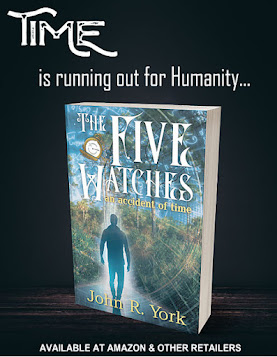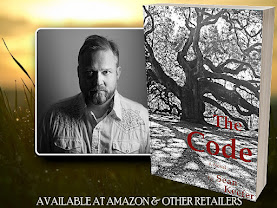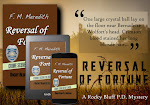Playwright’s Drama Takes On Life’s Big Questions In The Last Person Who Saw Farrokh
As dusk falls over a desert landscape, a lone woman waits anxiously
on a bench near a dried tree to meet someone. She is approached by a
young man. The mysterious interaction, and enigmatic conversation, which
ensues after their encounter, sets the tune for this esoteric four act
play by Farrokh Nazerian, The Last Person Who Saw Farrokh.
The young woman’s search for Farrokh soon evolves to: “Man’s search for salvation and his struggle to find a meaning and purpose for his life, while there is no meaning or purpose!” As Nazerian describes, “It was also an attempt to ‘see’ Farrokh, myself.”
In a stark setting, and beyond any specific time zone, the forces that impact Man’s life are played out on the stage by players including Death. The readers of this unique work, The Last Person Who Saw Farrokh, would be well served experiencing Nazerian’s passionate exploration of the great questions that haunt Man in his endless search for identity and answers to the big questions of life.
Among Nazerian’s literary influences is the 19th century German philosopher Friedrich Nietzsche. But Nazerian stresses that The Last Person Who Saw Farrokh is not a philosophical play. He says the play has a “mystical” trait rather than “philosophical” thinking.
Nazerian considers universal and pervading “confusion” the cause of all the problems afflicting mankind. Man has amassed a great deal of information, but is bereft of “knowledge.” The cry of the “why” is echoing throughout the history of mankind, only facing the deafening silence of the universe.
The Last Person Who Saw Farrokh addresses the concept of the Abarmard, as the only existential solution. According to Nazerian, to change the world we don’t understand and we are trapped in, “One has to change oneself and recreate oneself as a New Man, a Superior Man, a Man of Knowledge, the one that the ancient Persian Prophet Zarathustra teaches us to become, the Abarmard.”
Nazerian explains that transformation of Man from the “Ape of Reason” to the “Superman of Will” is existential. Abarmard does not become superior to other men, but only to “himself,” a New Man who will be capable of making direct connection with Life and to “see” the landscape of Infinity.
Farrokh tries to explain that concept:
“Farrokh: Abarmard is the future of man. He is what man is meant to become … To become Abarmard or a Superior Man is not a luxury; it is a necessity. We are not all born equal, physically, mentally, or socially. This inequality is at the root of our sense of injustice. But we are all born with equal potential to become Abarmard and to reach Infinity, regardless of our race, our gender, our physical or economic condition. The only way to achieve equality and to gain our freedom and salvation is to actualize our potential!”
Nazerian wants readers and audiences to come away from The Last Person Who Saw Farrokh “with some understanding that there is more to life than what we grapple with in our daily existence. It could be a pure, simple, mysterious, blissful, and everlasting joy, which we can only experience if we change. We could be our own saviors!”
And, he adds, he wants his audiences “to have a glass of wine afterward, in a moment of relaxation, and reflect!”
About the Author
Born in Iran, Farrokh Nazerian has lived in England and currently resides in Santa Barbara, California. In Iran, he wrote and edited articles for various magazines and edited numerous publications. He is also an entrepreneur who has established successful businesses. He is currently at work on his second book, “Sisyphus Revisited.” For more information on The Last Person Who Saw Farrokh see web site www.thelastpersonwhosawfarrokh.com
The Last Person Who Saw Farrokh
99 pages; soft cover, ISBN 978-0-615-51721-6
Publication date: March 2012
Published by Osborn Publications, Santa Barbara, CA.
Available at Amazon, Barnes & Noble, and by special order at bookstores nationwide.
The young woman’s search for Farrokh soon evolves to: “Man’s search for salvation and his struggle to find a meaning and purpose for his life, while there is no meaning or purpose!” As Nazerian describes, “It was also an attempt to ‘see’ Farrokh, myself.”
In a stark setting, and beyond any specific time zone, the forces that impact Man’s life are played out on the stage by players including Death. The readers of this unique work, The Last Person Who Saw Farrokh, would be well served experiencing Nazerian’s passionate exploration of the great questions that haunt Man in his endless search for identity and answers to the big questions of life.
Among Nazerian’s literary influences is the 19th century German philosopher Friedrich Nietzsche. But Nazerian stresses that The Last Person Who Saw Farrokh is not a philosophical play. He says the play has a “mystical” trait rather than “philosophical” thinking.
Nazerian considers universal and pervading “confusion” the cause of all the problems afflicting mankind. Man has amassed a great deal of information, but is bereft of “knowledge.” The cry of the “why” is echoing throughout the history of mankind, only facing the deafening silence of the universe.
The Last Person Who Saw Farrokh addresses the concept of the Abarmard, as the only existential solution. According to Nazerian, to change the world we don’t understand and we are trapped in, “One has to change oneself and recreate oneself as a New Man, a Superior Man, a Man of Knowledge, the one that the ancient Persian Prophet Zarathustra teaches us to become, the Abarmard.”
Nazerian explains that transformation of Man from the “Ape of Reason” to the “Superman of Will” is existential. Abarmard does not become superior to other men, but only to “himself,” a New Man who will be capable of making direct connection with Life and to “see” the landscape of Infinity.
Farrokh tries to explain that concept:
“Farrokh: Abarmard is the future of man. He is what man is meant to become … To become Abarmard or a Superior Man is not a luxury; it is a necessity. We are not all born equal, physically, mentally, or socially. This inequality is at the root of our sense of injustice. But we are all born with equal potential to become Abarmard and to reach Infinity, regardless of our race, our gender, our physical or economic condition. The only way to achieve equality and to gain our freedom and salvation is to actualize our potential!”
Nazerian wants readers and audiences to come away from The Last Person Who Saw Farrokh “with some understanding that there is more to life than what we grapple with in our daily existence. It could be a pure, simple, mysterious, blissful, and everlasting joy, which we can only experience if we change. We could be our own saviors!”
And, he adds, he wants his audiences “to have a glass of wine afterward, in a moment of relaxation, and reflect!”
About the Author
Born in Iran, Farrokh Nazerian has lived in England and currently resides in Santa Barbara, California. In Iran, he wrote and edited articles for various magazines and edited numerous publications. He is also an entrepreneur who has established successful businesses. He is currently at work on his second book, “Sisyphus Revisited.” For more information on The Last Person Who Saw Farrokh see web site www.thelastpersonwhosawfarrokh.com
The Last Person Who Saw Farrokh
99 pages; soft cover, ISBN 978-0-615-51721-6
Publication date: March 2012
Published by Osborn Publications, Santa Barbara, CA.
Available at Amazon, Barnes & Noble, and by special order at bookstores nationwide.

































































































































































































Leave a Comment